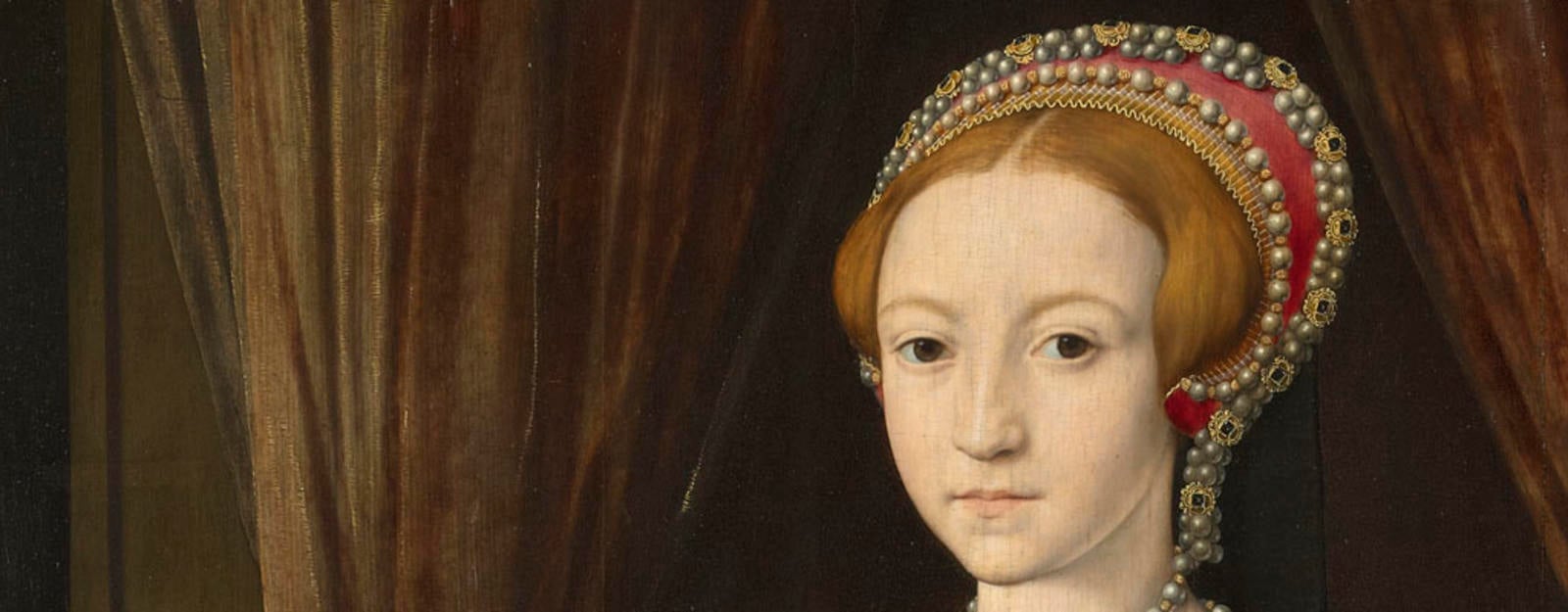Elizabeth I, Queen of England (1533-1603)

- Born 1533, Palace of Placentia [Greenwich]
- Died 1603, Richmond Palace [Greater London]
Elizabeth I was the daughter of Henry VIII and Anne Boleyn. During her twenties she was imprisoned by her sister, the Catholic Mary I, whom she succeeded in 1558. In her reign Protestantism was re-established and the Spanish Armada was defeated. Elizabeth never married and her rule brought to a close the Tudor dynasty.
Elizabeth I was a highly-educated and cultured young woman (RCIN 404444). She was fluent in several European languages, a fine calligrapher and musician, and later patron to playwrights such as Shakespeare and Ben Jonson. She inherited many palaces, and as a result built little of her own. She did add to existing buildings most notably the rebuilt North Terrace and the Long Gallery at Windsor. This latter space, now part of the Royal Library, she used for writing and reading and private study as well as for official court business, and a fine Tudor chimneypiece remains.
Court masques, ceremonies and tournaments formed part of the visual splendour of Elizabeth's reign, along with the image of the queen herself. A beautiful suit of armour in the Royal Collection was commissioned for one such occasion to be worn by one of the queen's champions. It gives a sense of the magnificence and splendour of these transient celebrations. Another portrait of the period depicts an unknown woman in Persian costume, perhaps part of a court entertainment where elaborate dress would be worn.
Elizabeth herself had over 600 pieces of jewellery and over 2000 dresses, some of which are recorded in the many magnificent portrait images commissioned by her loyal courtiers and subjects, and a few of which remain in the collection (for example, this piece). Very few of the iconic portrait images themselves were ever in the Royal Collection, as they were commissioned for and by others, to celebrate the queen and to show allegiance. Many can now be found in national museums and galleries, such as the Ditchley portrait at the National Portrait Gallery and in private collections.
Elizabeth controlled her image carefully and many portraits reference supreme power with goddess-like qualities. This work by Hans Eworth shows Elizabeth triumphing over the three most beautiful mythological goddesses and may have been painted to encourage ideas of marriage. Portrait miniatures of Elizabeth were painted by Nicholas Hilliard and Isaac Oliver, and remain some of the finest examples in the collection. These works could be kept carefully and privately or sometimes worn about the person in jewelled cases.
Reigned: 1558–1603